New Items
A New Old Lens
Like a lot of photo history buffs, I’ve been quite excited about Lomography’s new iteration of the Petzval lens in 85mm focal length. For those of you who don’t know about the Petzval lens, I wrote about it a few years ago. It really has a rather a fascinating story.
Since writing that article, I’ve been rather obsessed by this lens. I own several of them, made in the late 1800s, but I haven’t been able to adapt them to work on a modern camera. Now Lomography has reproduced the Petzval lens in a nice brass housing, for either Canon or Nikon mounts. Our first copies arrived yesterday and I grabbed them for a bit before they headed out the door.
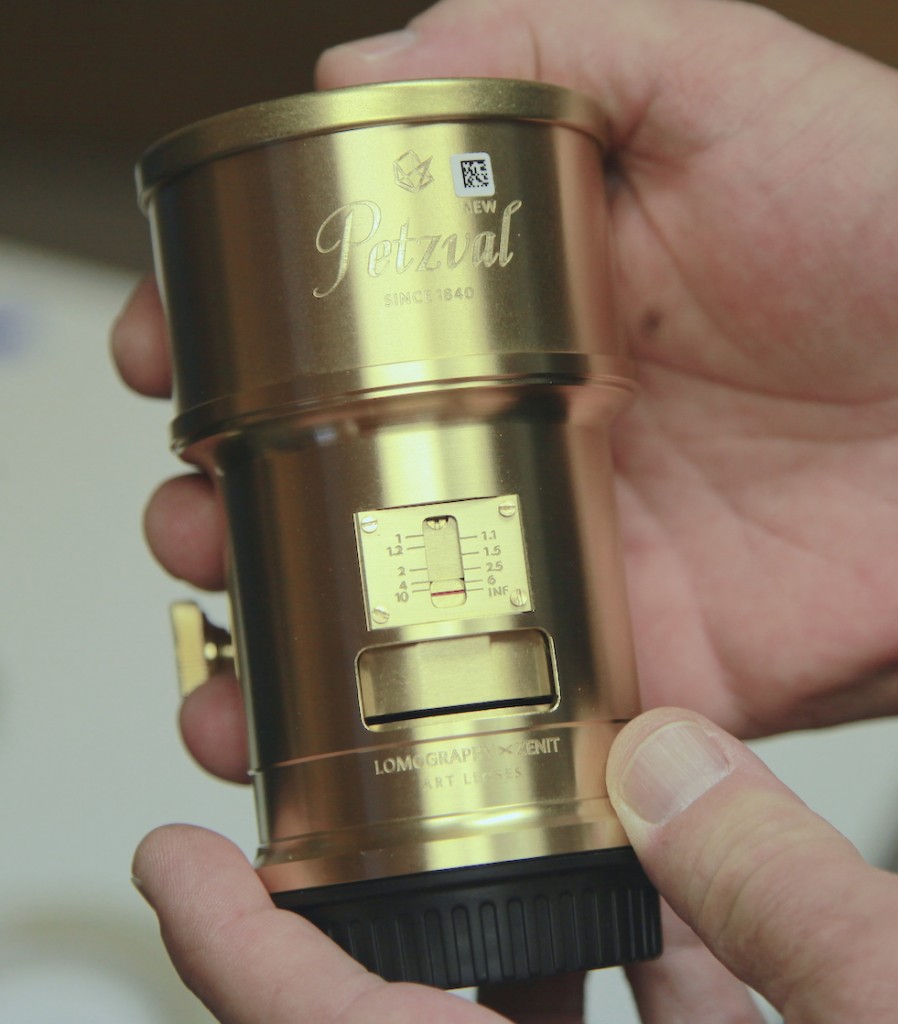
- The new Petzval is quite a handsome bit of kit.
It truly is the classic design, complete with Waterhouse stops instead of an iris, and rack-and-pinion focusing instead of a rotating ring. None of your fancy focusing helicoids or 16-bladed aperture rings for this lens.
Now most of you, when you get a shiny new lens arriving, run outside and start taking pictures. But that’s not how we roll here at Lensrentals.
What follows is just wrong.
But just wrong seems so right sometimes. We decided some new 175 year-old technology needed to meet some new 6-months old technology.
So the first Petzval got put up on the Trioptics MTF bench.
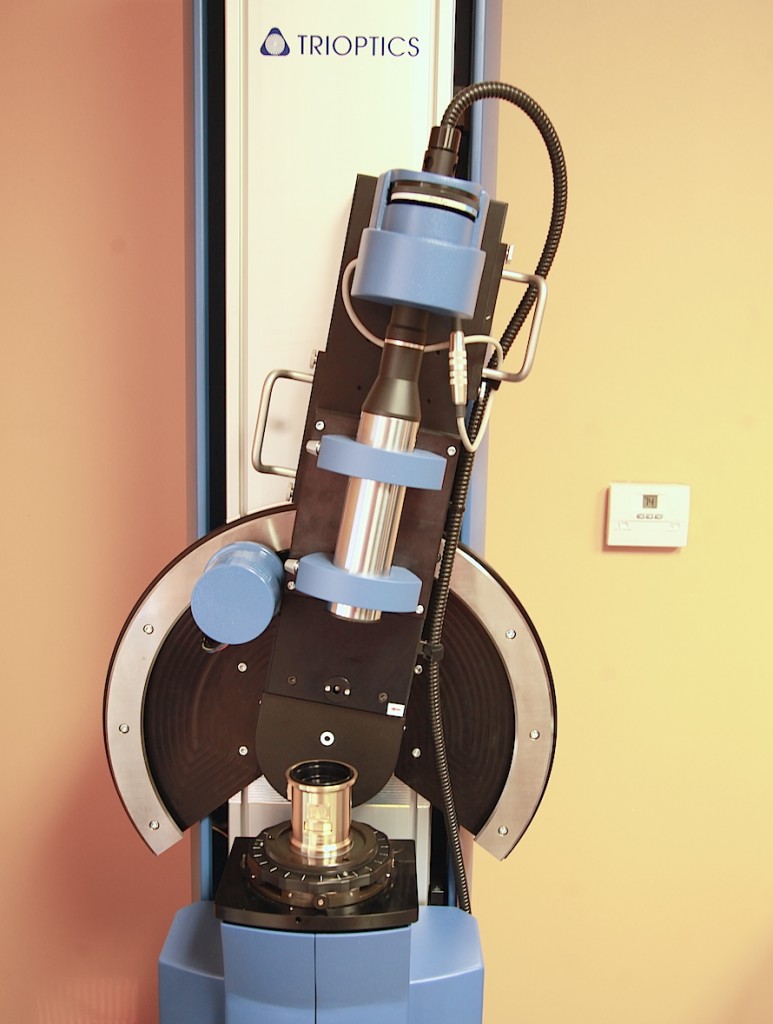
While the other one got slapped on OLAF, our 5-micron pinhole tester.
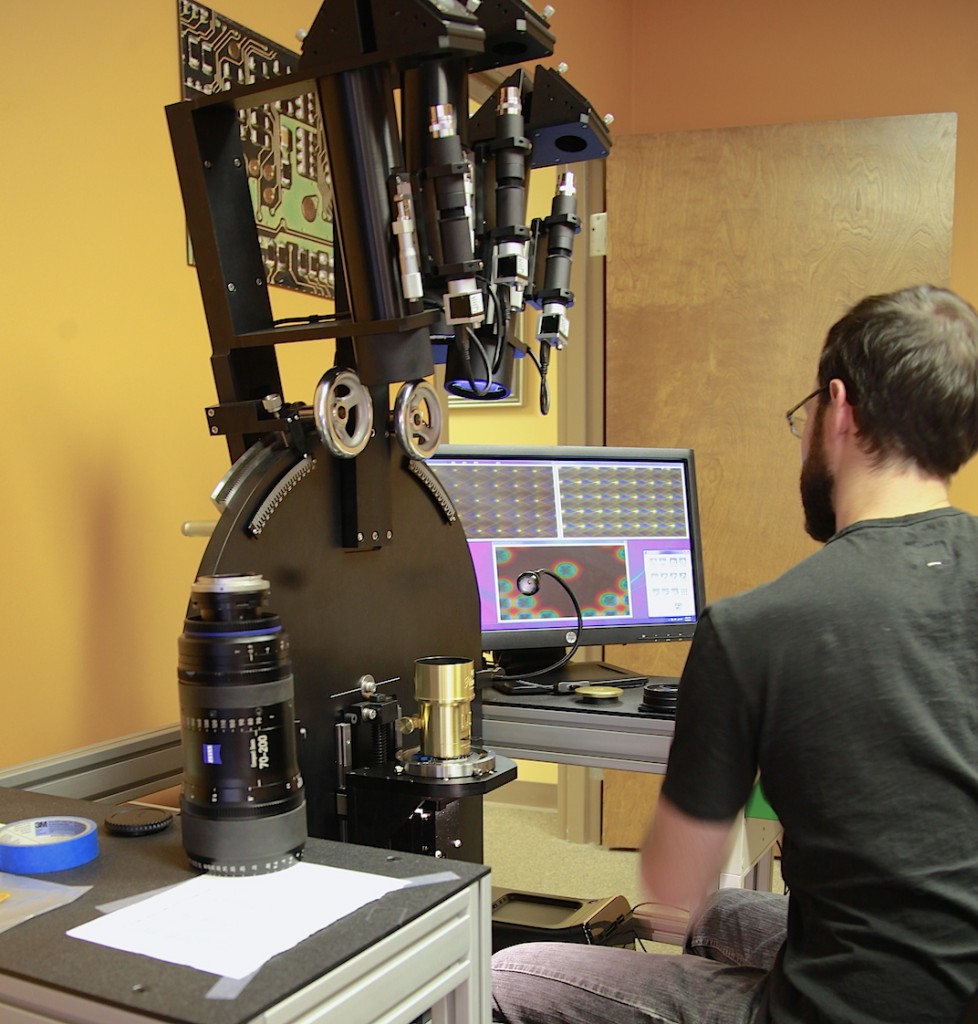
Obviously, this 175 year-old design isn’t supposed to complete with modern lenses for resolution or aperture. It provides a classic dreamy look. But hey, we test lenses, so guess what we’re going to do?
OLAF actually is more fun here, showing what this lens is about. The spherical aberrations should make the out-of-focus areas smooth and pretty.
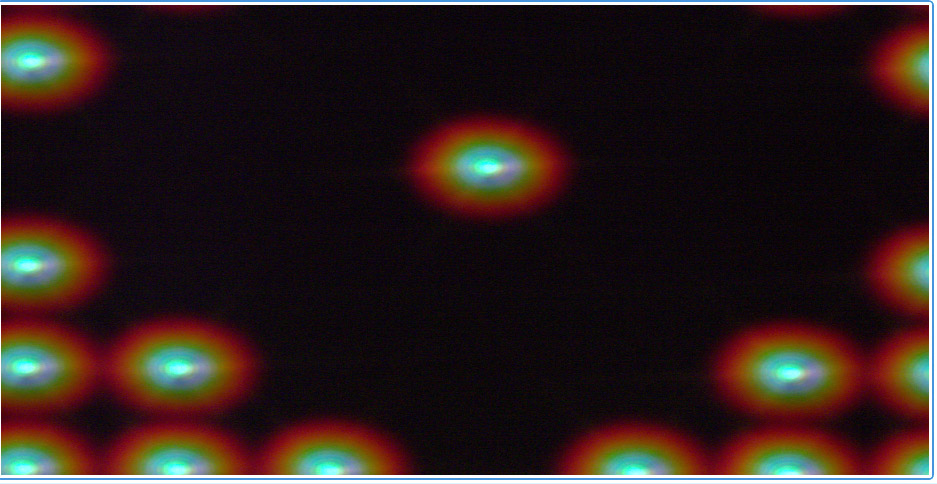
In case the built-in aberrations aren’t enough for you, Lomography includes, in addition to the standard Waterhouse stops at various apertures, some very fun cut-out aperture stops: a teardrop, hexagon, and a star.
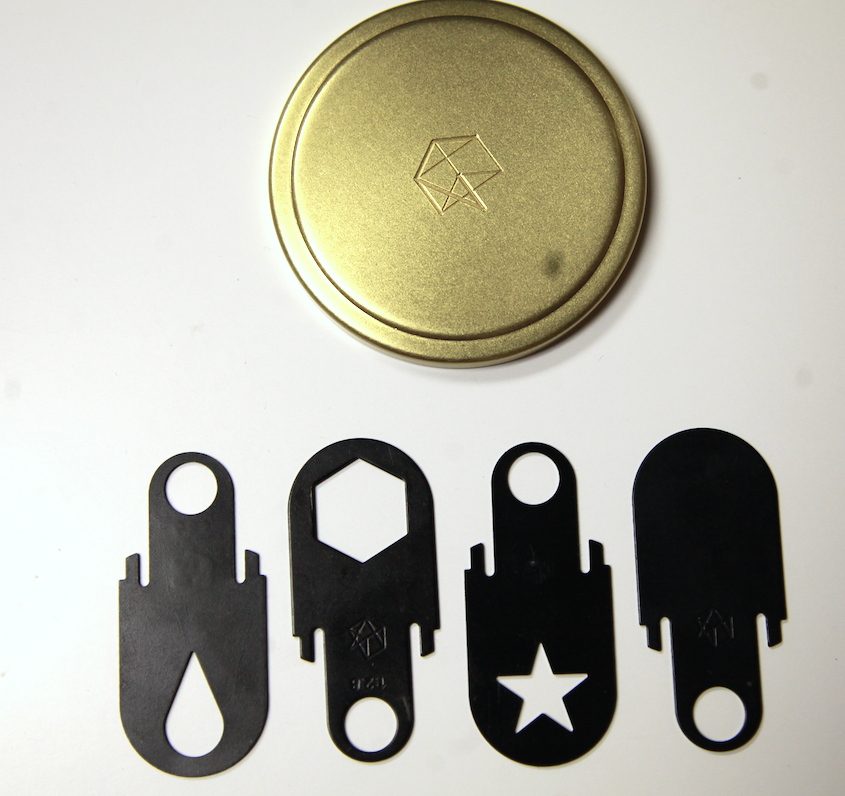
They have some interesting effects on OLAF’s pinhole light. I can’t wait to see what they do with actual photographs.
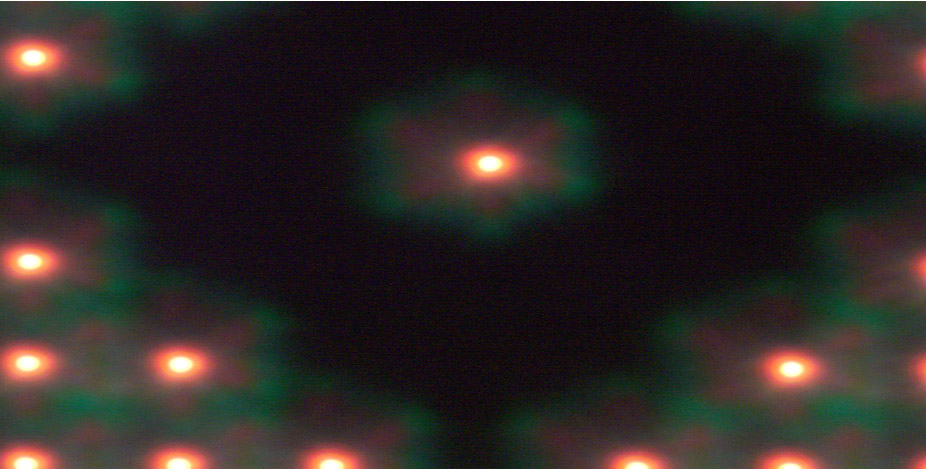
- The hexagonal aperture isn’t all that strange.
The star aperture should make nice star points from light sources in night shots.
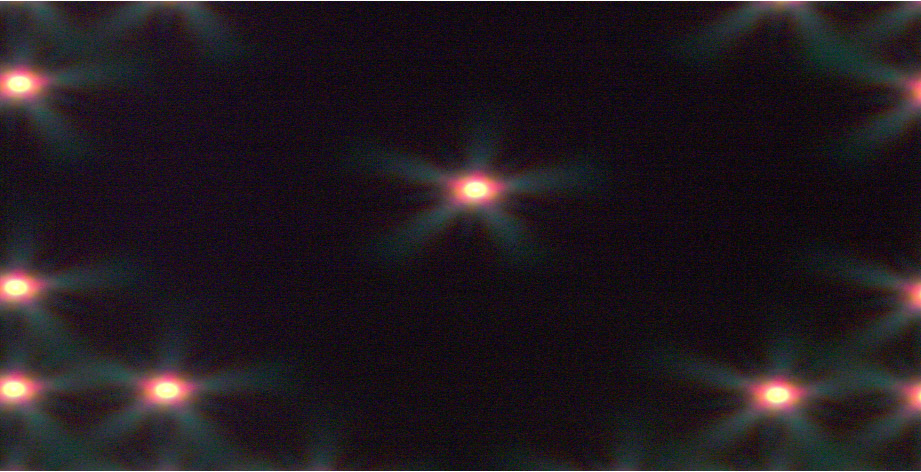
- Star aperture with lens in focus.
But it should also make for some interesting effects with out-of-focus highlights.
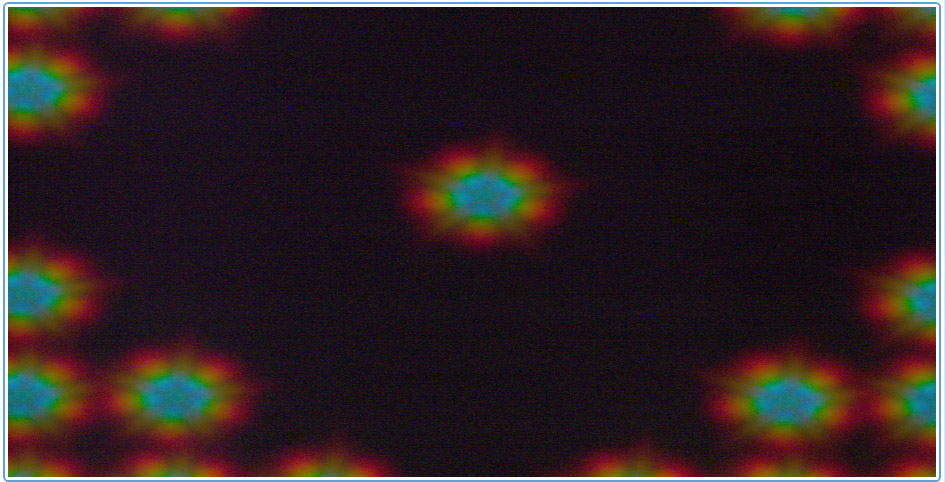
Star aperture defocused.
The teardrop aperture looks much like a decentered lens on OLAF when properly focused.
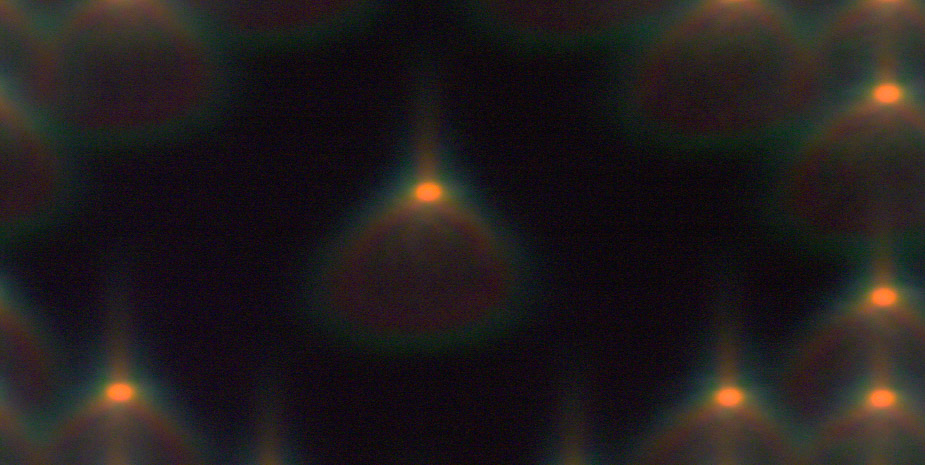
But becomes more interesting in out-of-focus areas.
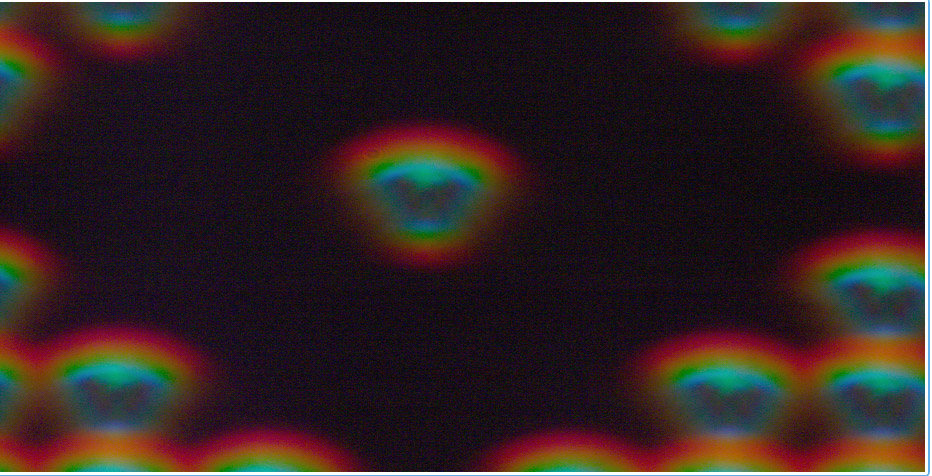
Of Course I Tested It
As I’m sure you know, the indispensible Kingslake’s History of the Photographic Lens points out that the Petzval design “uses overcorrected astigmatism to flatten the tangential field . . . giving excellent definition in the center of the image deteriorating rapidly towards the edges.” I was quite pleased that the MTF bench showed that the new version does exactly that. Note that once you get away from the middle 1/3 of the image astigmatism is, well, pretty damn impressive.

- Red–10lp/mm; Green–20lp/mm; Blue–30lp/mm – you get the drill.
What the MTF charts suggest we’ll get is exactly what Petzval lenses are supposed to deliver; a fairly nice centered portrait with the outer half of the image significantly blurred. Even in the center, though, the lens doesn’t resolve very well by modern standards wide-open. The frequency graph of the center of the lens emphasizes this.
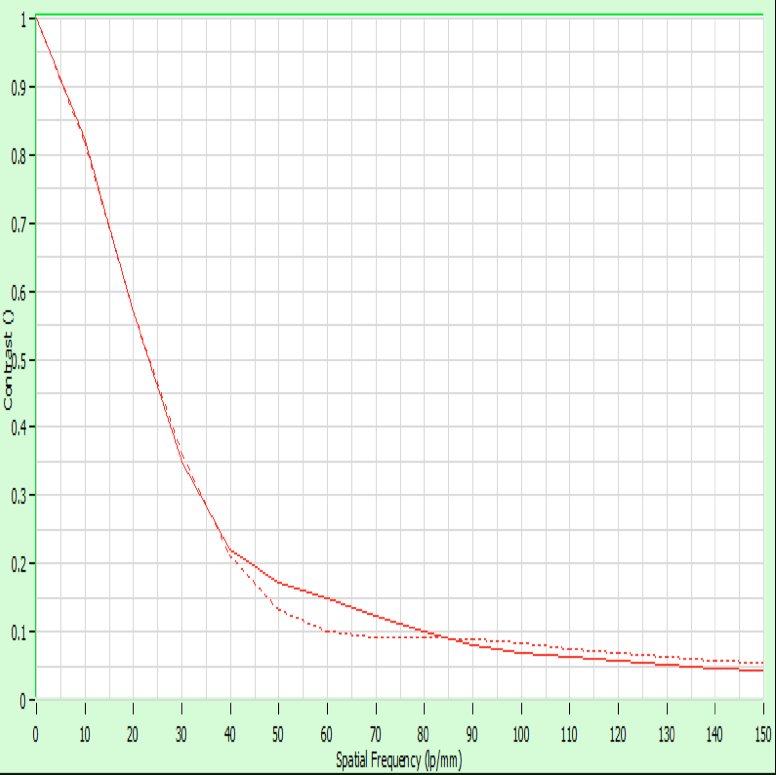
I know that most of you, at this point, are thinking, “Sure, Roger, we expected these MTF results. But can’t you please show us the field curvature, too?” Fear not, my friends. I can and I will. As Kingslake said, the astigmatism of the lens flattens the tangential lines pretty well, but the sagittal lines have some wicked field curvature. Although in this case that’s a good thing, since a major purpose of the lens is to blur everything off-center.
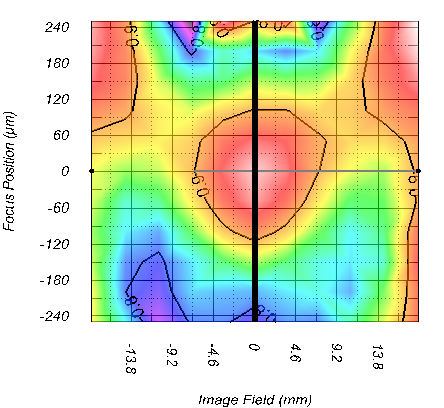
- Field curvature. Red shows the sharpest area. “0” on the vertical axis is the plane of focus.
Yes, I Sort of Took Some Pictures
It’s ugly and rainy here, and the two copies we’ve received are on their way out the door today, so I had no chance to exhibit my superb photographic talents. (Which is good, because I really don’t have much in the way of superb photographic talent. I’m a Photo Geek, not a Photo Grapher.)
But I did discover a few useful things. First, you are not going to want to shoot landscapes with this lens. It’s so soft at infinity that at first we thought it wasn’t reaching infinity focus. Not to mention that all the King’s Photoshop Horses can’t make the edges sharp.
But one thing I found while trying this is that the odd shaped apertures really mess up the camera’s autoexposure (on a Nikon D3x at least). The image on top is with the f/4 Waterhouse stop in place, the one on the bottom with the Star Aperture, otherwise they were identical although both autometered.
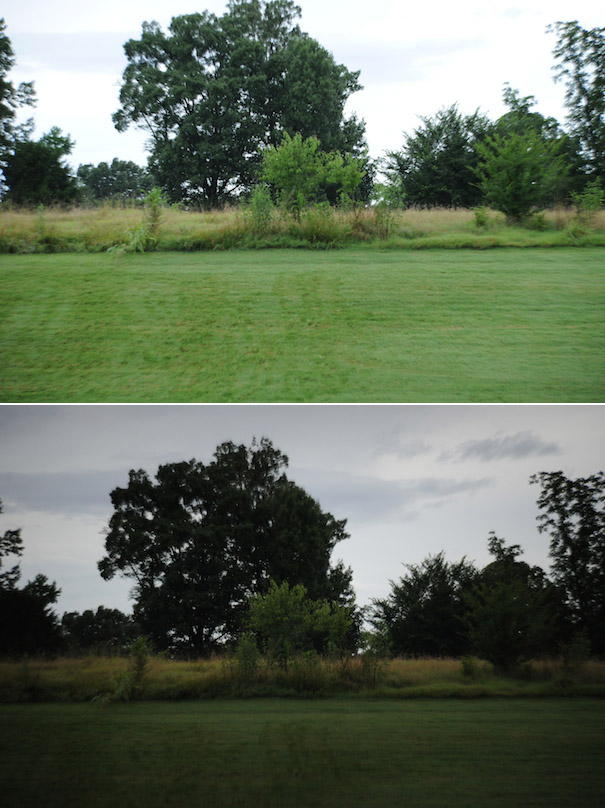
The effect can be kind of cool, though, close up. For the closer shots below, the top image is shot wide-open, the second with the Star aperture (can you tell I like that one?) and exposure bumped up in post about half a stop. I should also mention that I’d shoot raw with this lens. Color seems to change with aperture a bit and almost every shot either needs to be white-balanced individually with the Waterhouse aperture in place, or corrected in post.
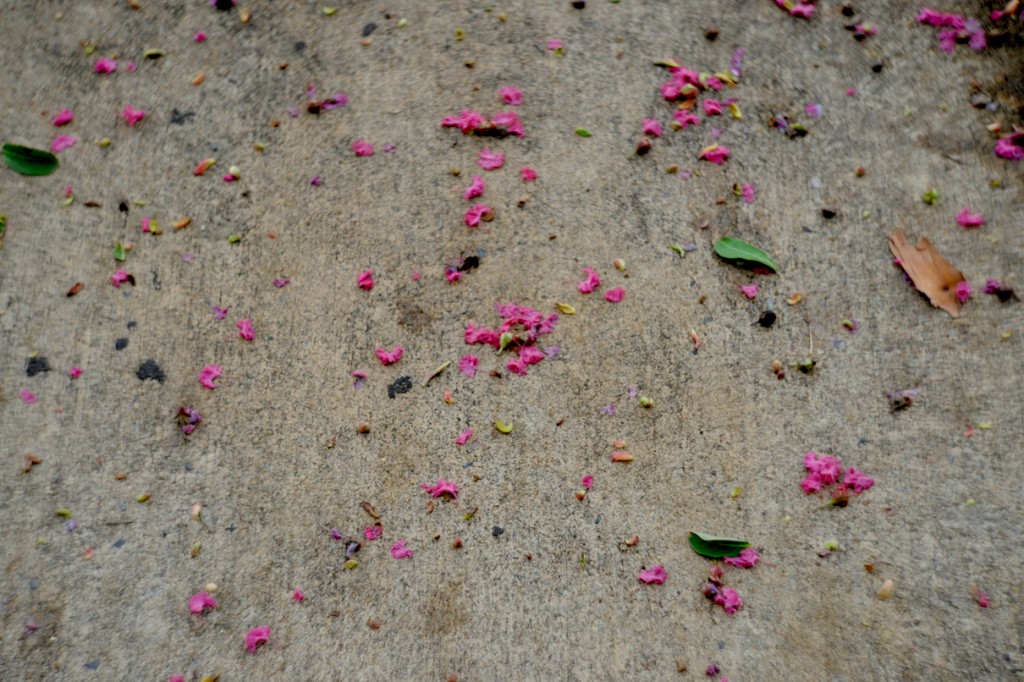
- Wide open. Even shrunk down for web display, the softening of the image away from center is quite apparent.
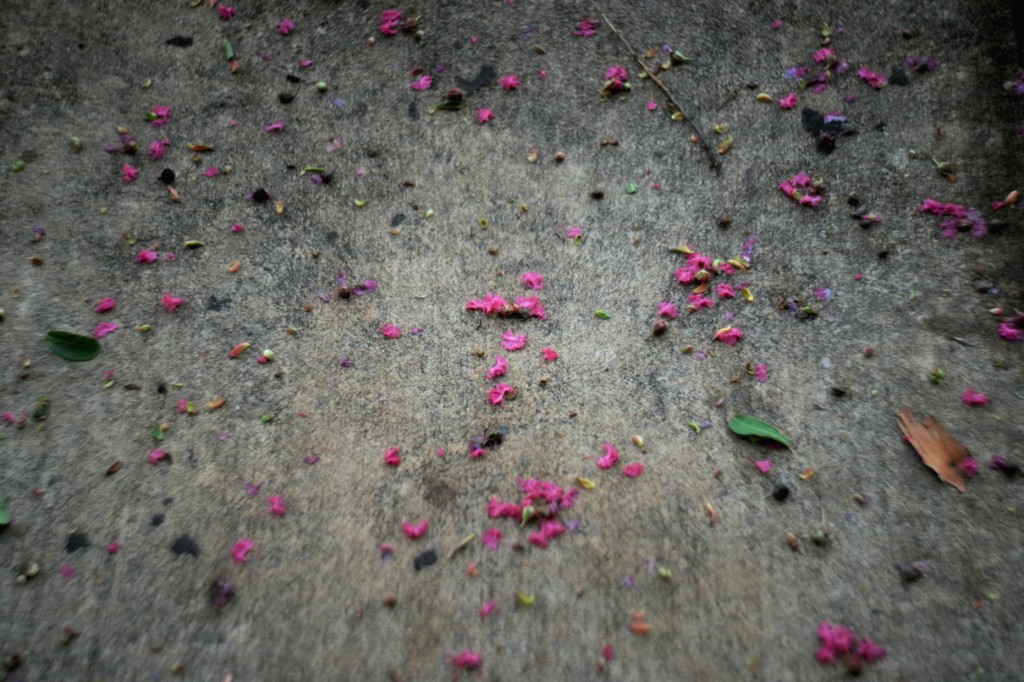
The major use of this lens, of course, is fun. But it originally was called the Petzval Portrait Lens, so a portrait seems in order. Since my usual swimsuit models and studio lighting weren’t available at 7 a.m., I made do with Corey, the only person who managed to be at work on time, lit by the soft, romantic glow of a test chart.
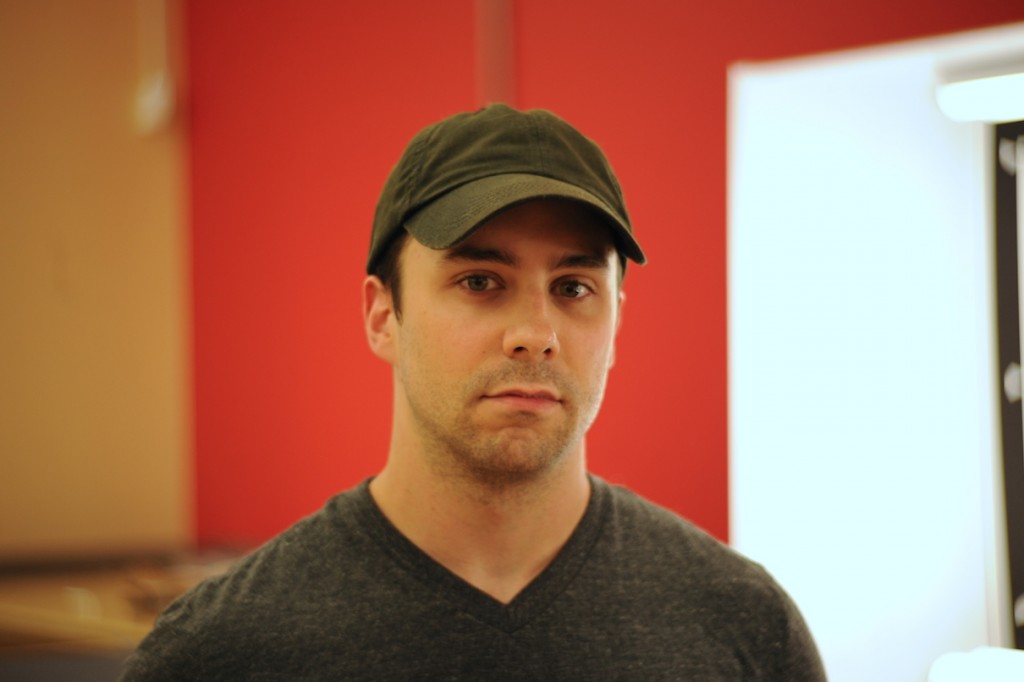
Now, I’ll have to end my little post, as the packers have come and ripped the last copy from my hands. I’ll mention a couple of things that those of you interested in this lens might want to know before we close, though.
The rack-and-pinion focusing is quite accurate, but rather clumsy to do while you’re looking at the LCD to Live-view focus. I’d really recommend using a tripod if at all possible. Or if you want, just set it at the estimated hyperfocal distance and shoot away. It’s not going to be razor sharp no matter how well you focus.
I’d really avoid any crosshatched backgrounds. Or maybe go find them. The astigmatism makes them look odd, but whether it’s a good-odd or a bad-odd is probably in the eye of the beholder.
I mentioned earlier that the lens is pretty soft at long distances, but it seems to do quite well close up.
You aren’t going to replace any of your current lenses with this one. But for some of you, it might be a fun addition that gives your portraits some really different looks.
Oh, and one last link for the overly serious among you who want to lecture me about how this lens is about taking pictures and not about lab values.
Roger Cicala and Aaron Closz
Lensrentals
July 2014
Author: Roger Cicala
I’m Roger and I am the founder of Lensrentals.com. Hailed as one of the optic nerds here, I enjoy shooting collimated light through 30X microscope objectives in my spare time. When I do take real pictures I like using something different: a Medium format, or Pentax K1, or a Sony RX1R.
-
Kent SD
-
A. Costa
-
Gábor Ember
-
Bernhardas
-
Steve
-
Sggs
-
David Bennett
-
Andres
-
Lars F.P.
-
Tord S Eriksson
-
Aaron
-
Wally
-
Nqina Dlamini
-
Damien
-
Brian
-
Aaron
-
Siegfried
